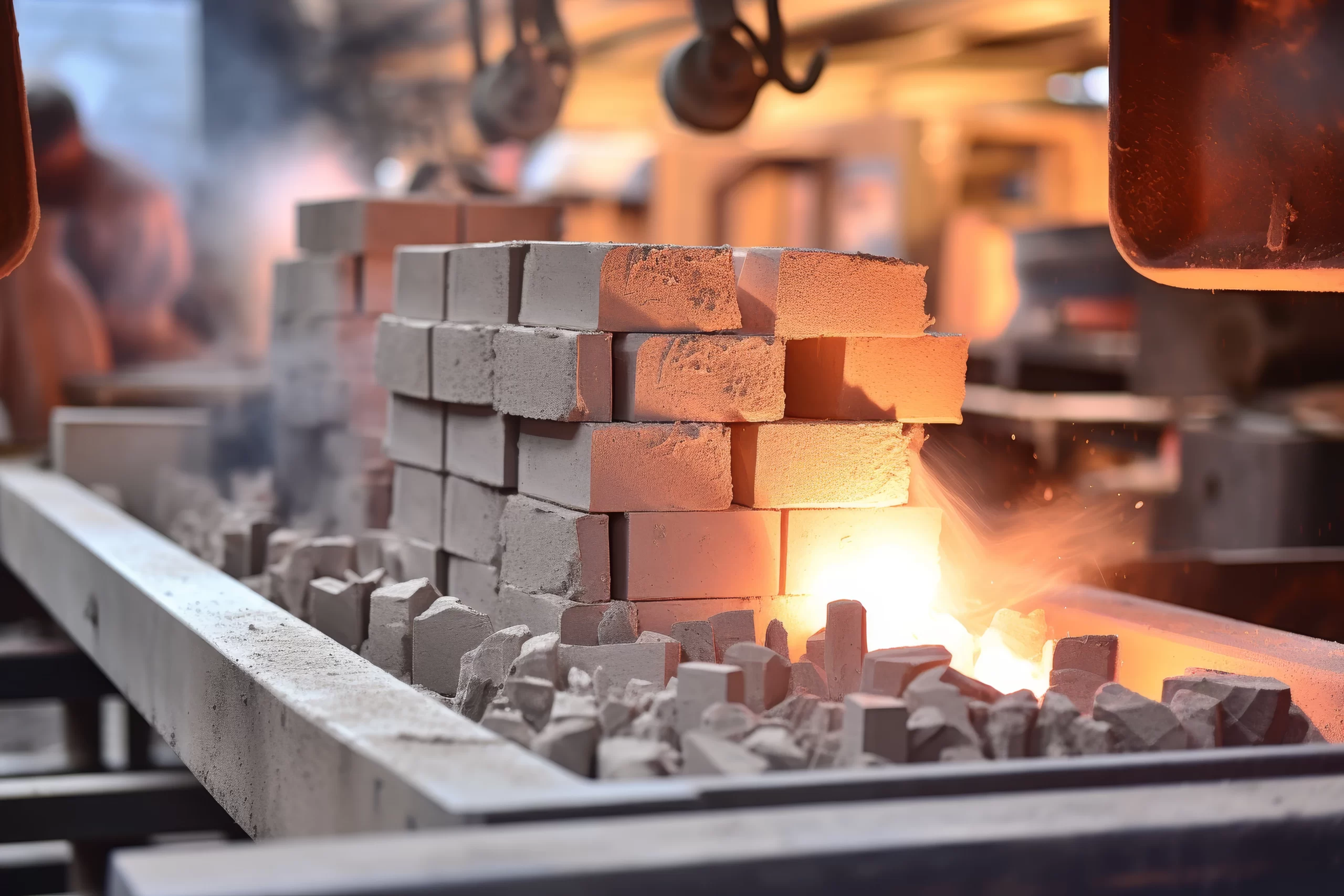In industries like steel and cement manufacturing, where high temperatures and mechanical stress are part of daily processes, refractory materials are essential for smooth operations. These materials help protect industrial equipment from extreme heat and mechanical wear, significantly reducing downtime and improving efficiency.
The global refractories market hit $25.1 billion in revenue in 2023 and is set to reach $35.3 billion by 2030, growing at a steady 4% annually. This surge comes from rising demands across various industries, better technology, and a strong push for energy efficiency. For the steel and cement sectors, this means high-quality refractory materials are not just optional but essential. Investing in the right refractory solutions is now crucial for staying ahead in a competitive market and cutting down on environmental impact.
This article explores how refractory solutions are vital to the steel and cement industries and how selecting the right materials can reduce costs, extend equipment lifespan, and enhance productivity.
What Are Refractory Materials?
Refractory products are designed to endure extreme environments. They include bricks, high temperature refractory cement, and castables, all intended to provide thermal insulation and mechanical protection. These materials are especially critical in high-temperature industries like steel and cement manufacturing, where heat and mechanical wear would otherwise lead to frequent equipment failure.
Refractory Materials in Steel Manufacturing
Steel production requires equipment that can withstand extreme heat and stress. In this section, we’ll explore how refractory products are used in this industry to ensure the reliability and longevity of essential machinery.
Heat and Chemical Resistance
In steel plants, furnaces, ladles, and converters must endure very high temperatures and exposure to corrosive elements. These machines would suffer severe wear without the right protection, leading to costly repairs. Refractory bricks provide thermal insulation and resist chemical corrosion, which helps safeguard critical equipment from heat damage, ensuring smoother operations and reducing repair costs.
Improving Efficiency
Using top-grade refractory solutions in steel production also helps optimize energy use. By maintaining consistent heat levels and preventing heat loss, plants can run more efficiently. This leads to lower energy consumption and a more cost-effective production process.
Refractory Solutions in Cement Production
The cement industry similarly relies on high-temperature processes, particularly in kiln operations. Refractory linings are key to keeping kilns functional while maintaining energy efficiency and reducing maintenance needs.
Protecting Kilns and Extending Lifespan
Cement kilns must operate at extremely high temperatures to process raw materials into cement. Over time, this intense heat can degrade kiln linings. Refractory bricks and cement are used to line these kilns, helping to insulate them and retain heat. This not only enhances energy efficiency but also extends the life of the kiln, reducing the need for frequent repairs.
Energy Efficiency in Cement Plants
By insulating kilns and retaining heat effectively, high-quality refractory linings improve energy efficiency in cement production. The better the heat retention, the less energy is wasted, which helps plants save on fuel costs and improve overall output.
Choosing the Right Refractory Materials
Selecting the appropriate refractory products is essential for industries that rely on high-temperature processes. It’s important to consider more than just heat resistance—factors like chemical compatibility, mechanical strength, and insulation properties also play a key role.
Factors to Consider
- Temperature Tolerance: Ensure the chosen materials can withstand the maximum temperatures in your operation.
- Chemical Compatibility: Refractory materials must also resist corrosive elements, especially in environments like the refractory materials for chemical industry where chemical resistance is critical.
- Thermal Efficiency: Look for materials that offer excellent insulation to minimize energy loss.
- Mechanical Strength: Make sure the materials can handle the mechanical stress of your production processes.
Benefits of High-Quality Refractory Solutions
Investing in high-quality refractory products from reputable refractory materials manufacturers offers several benefits, which directly impact productivity and profitability.
Improved Operational Efficiency
By reducing heat loss and improving thermal efficiency, high-quality refractory linings ensure that industrial processes run smoothly with fewer interruptions. This is especially important for operations like steel production, where maintaining a stable temperature is critical for refining and melting.
Lower Maintenance and Repair Costs
With durable, high-performance materials, equipment is better protected from damage, which significantly lowers maintenance and repair costs. Fewer repairs also mean less downtime, keeping production schedules on track.
Extended Equipment Life
Refractory solutions provide mechanical and thermal protection, which helps extend the life of expensive equipment like furnaces and kilns. This means fewer replacements and long-term savings for businesses.
Ganeshas Refractory: Trusted Solutions for High-Temperature Industries
When it comes to high-performance refractory solutions, Ganeshas Refractory offers a wide range of products tailored to the needs of industries like steel and cement. With a focus on durability, energy efficiency, and reliability, Ganeshas delivers materials that help businesses improve efficiency, reduce costs, and extend equipment life.
Conclusion
In industries such as steel and cement, refractory materials are vital for maintaining operational efficiency, reducing downtime, and protecting expensive machinery. Choosing the right products and working with a reliable supplier can significantly impact energy consumption, equipment lifespan, and overall productivity. By investing in high-quality solutions, businesses can ensure long-term success in high-temperature operations.




